By Andrew Bradshaw, P.E., and Keith MacKenzie, P.E.
The 2022 completion of Boston’s Green Line Extension fulfills a vision first proposed nearly a century ago by planners for the nation’s oldest subway system. The $2.3 billion design-build project extended the Massachusetts Bay Transportation Authority’s Green Line from its previous northern terminus at Lechmere Station in Cambridge — just across the Charles River from Boston — to Somerville and Medford, two of the most densely populated cities in New England.
Situated in an area that has been historically underserved by transit, the GLX significantly increases access to the MBTA's light-rail system. The number of residents living within 0.5 mi of a transit station has increased from 20% to 80% in Cambridge, Somerville, and Medford. Ridership is expected to increase by more than 50,000 passenger trips a day and reduce auto emissions by eliminating more than 25,000 vehicle mi traveled every day.
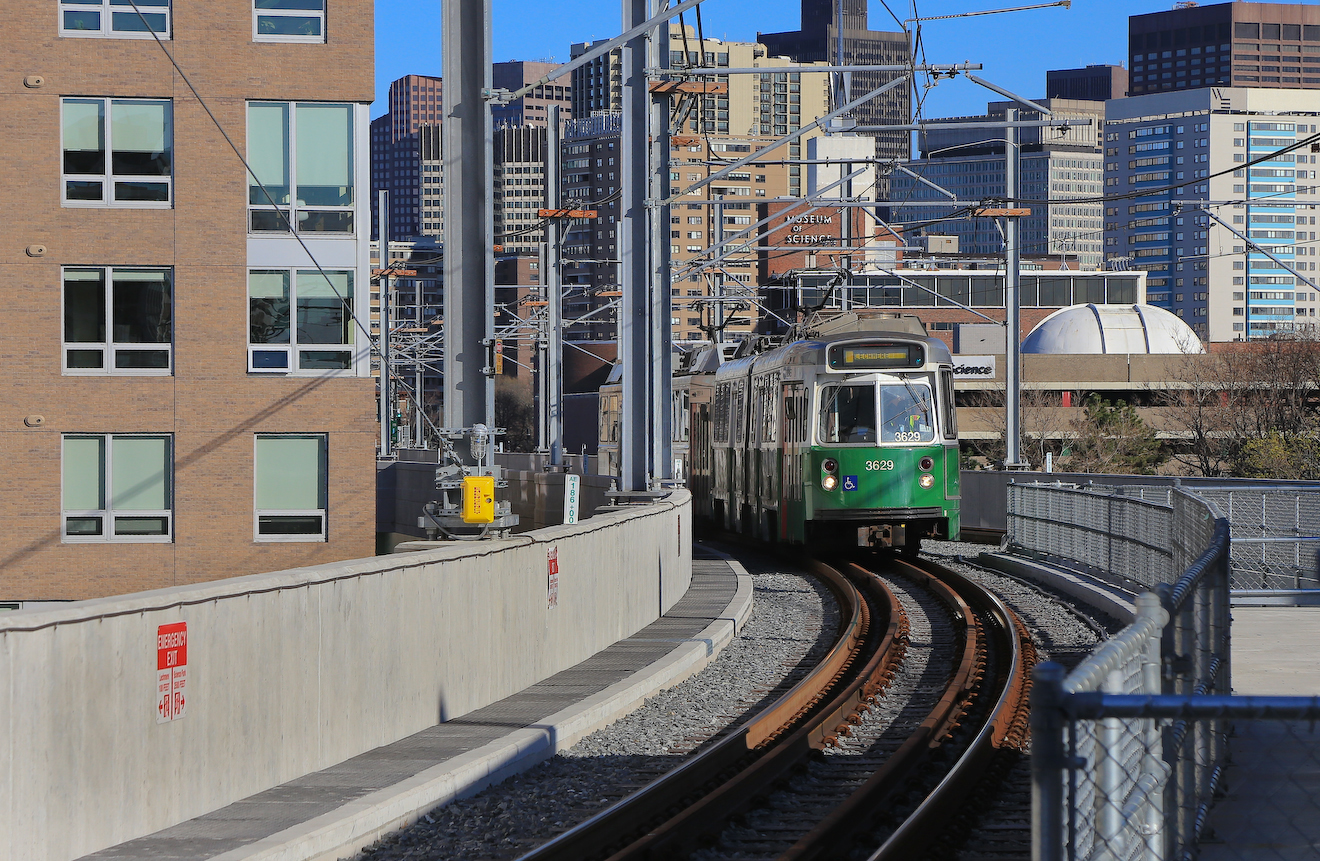
The extension consists of two separate branches that begin at the Lechmere Station, which itself was relocated and reconstructed, and run along existing MBTA commuter rail lines. The 0.5 mi long Union Square Branch running to the heart of Somerville opened in March 2022 to great fanfare from local transit and public officials. Approximately 4 mi long, the Medford Branch includes five stations and terminates adjacent to the Tufts University campus on College Avenue. Testing of rail vehicles on the Medford Branch began in May 2022, and full revenue service started in December, bringing the long-awaited project to a close.
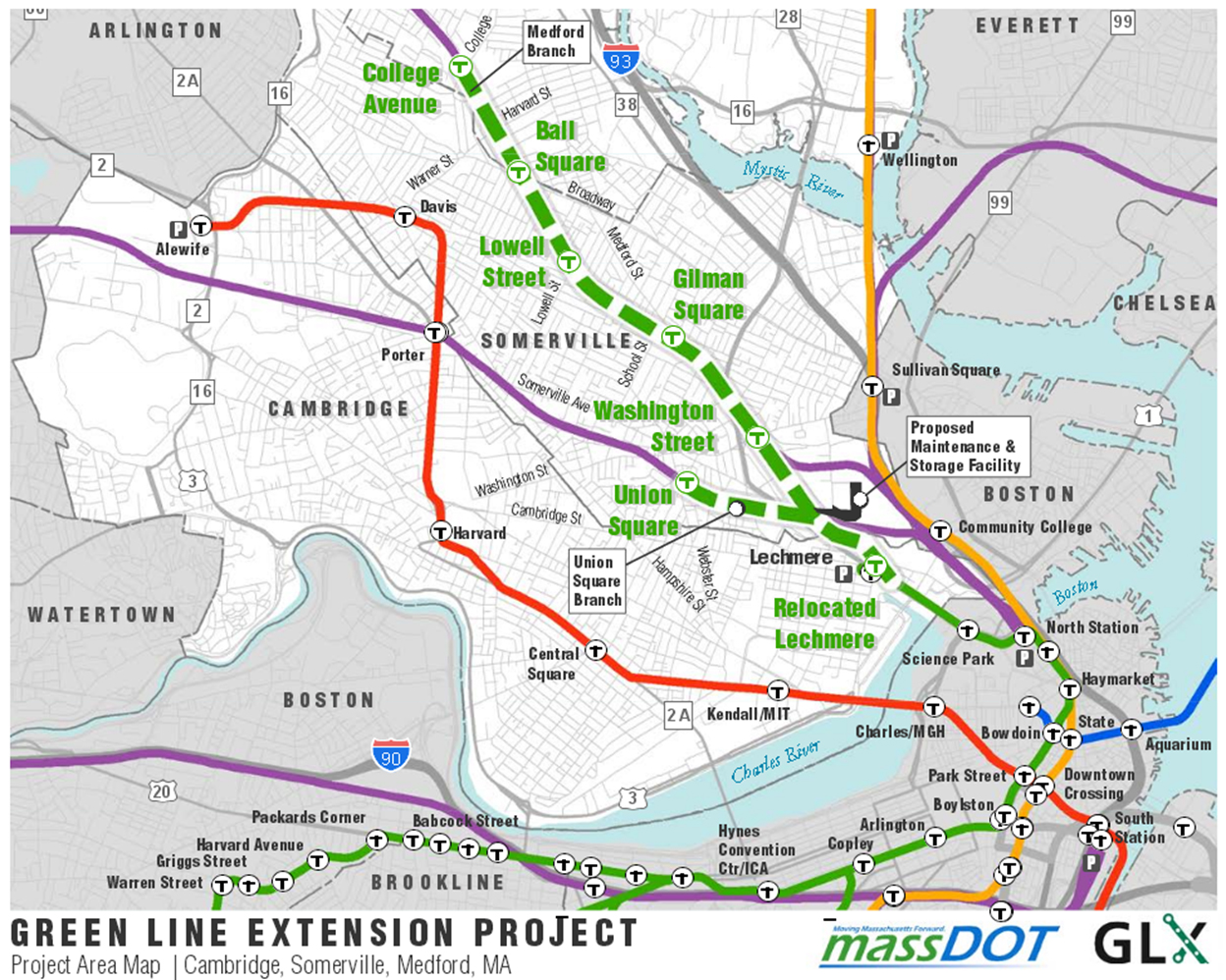
The extension has fostered economic development along the new lines, with transit-oriented housing and retail space springing up near stations, while a number of former industrial buildings have been converted into lab and office space for Boston’s burgeoning life-sciences industry. The GLX significantly reduces travel time, enabling residents of Somerville to reach the new Lechmere Station in fewer than five minutes and the further Medford station in fewer than 10 minutes, giving residents a seamless, one-seat ride to downtown Boston for the first time.
Conceived more than 30 years ago, the GLX was intended to help reduce carbon emissions from automobiles by encouraging motorists to switch to public transit. However, early proposals were beset by higher-than-anticipated costs that pushed the budget beyond $3 billion and nearly scrapped the project.
Back on track
Following a reevaluation, the project was revived in 2016 and awarded to GLX Constructors, a joint venture comprising Fluor Enterprises Inc., The Middlesex Corp., Herzog Contracting Corp., and Balfour Beatty Infrastructure Inc. Using a design-build delivery method, the team reduced costs by nearly 25% while maintaining nearly all service requirements and amenities outlined under the final environmental impact reports.
Serving as the project team’s lead designer, STV streamlined the design process to create greater value for the community and the client through the use of common elements and materials. This included a uniform set of standards and a consistent approach wherever possible for structural items, particularly each of the stations along the extension. Using this approach saved valuable time during the overall design process and the construction of these structures.
As a result, STV was able to finalize design plans with support from multiple stakeholders in each of the three communities along the new rail alignment’s two separate lines, completing the first design packages within seven months of the notice to proceed.
The project was divided into more than 50 design packages, many with multiple sub-tasks.
These packages included the design of the line’s seven stations, a new mile of rail viaduct, a half-dozen overpass road bridges, a new railroad bridge, a major new rail vehicle maintenance facility and storage yard, and all the associated power substations, signal systems, and necessary drainage and retention areas. Achieving this monumental task required frequent communication among specialized teams in offices around the country, along with precise, complex coordination among multiple engineering disciplines.
STV has a long history of success in delivering significant projects for the MBTA, the fourth-largest transit system in the country. The firm served as the lead designer for the agency’s first large-scale design-build project, which involved the completion in 2007 of the $320 million reconstruction of the 18 mi long commuter rail line known as the Old Colony Greenbush Line. Among other projects, STV has since helped add bus rapid transit service with the design of the Silver Line Courthouse Station and Tunnel as well as the design of the Boston Landing station along the Framingham to Worcester commuter rail line and upgrades to the MBTA’s Orange Line’s traction power system.
Along its 0.5 mi long Union Square Branch, the GLX is within the existing MBTA right of way that parallels its Fitchburg commuter rail line, while the 4 mi long Medford Branch is within the right of way that parallels the Lowell commuter rail line. To accommodate the additional tracks, sloping embankments had to be removed from much of the Medford Branch corridor, requiring the use of varied types of retaining walls and the shifting of the commuter rail line tracks.
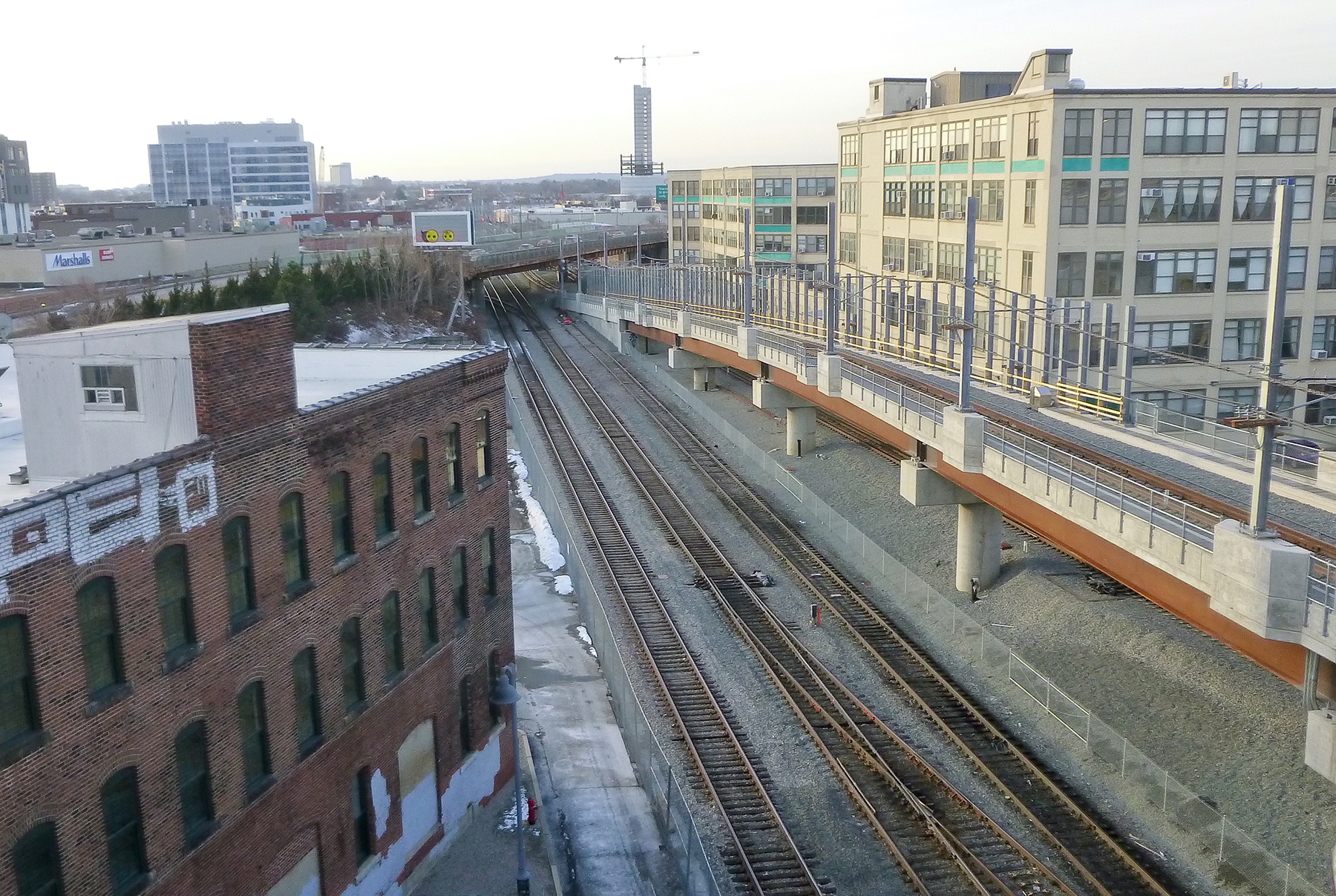
In response to overwhelming community input, the GLX design also incorporated a fully accessible pedestrian and bicyclist path running along much of the alignment and integrating with the existing Somerville community path. This new path, along with the necessary stations, power substations, signals, and overhead catenary systems, all had to fit within a very tight urban corridor without infringing on adjacent roadways or private properties. The restricted corridor required close coordination to avoid design conflicts between necessary elements and further emphasized the need for constant communication and innovation. Design tolerances in some areas of the corridor were within a quarter inch.
To save room, a spring tensioner system was employed for the OCS rather than traditional counterbalance weights that take up more space. Near some of the stations, specially shaped maintenance holes were used for the 60 in. diameter underground drainage pipes that run along much of the corridor.
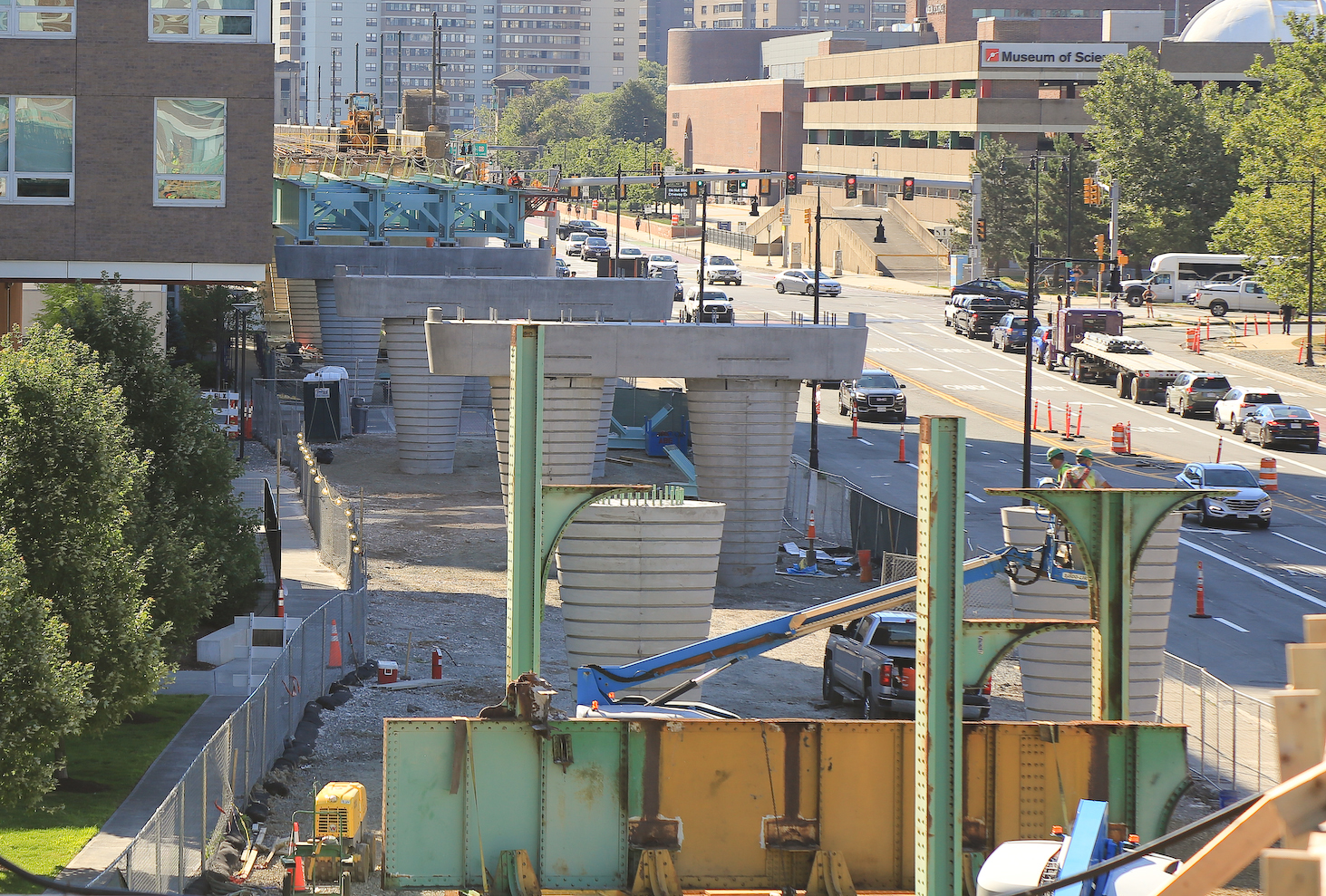
Perhaps nowhere are the tight clearances better illustrated than the mere inches that separated the construction of much of the new viaduct structure from existing buildings near the new elevated Lechmere Station. At this location, the Lechmere Viaduct divides into the Medford Branch and the Union Square Branch. The latter branch includes separate eastbound and westbound viaducts that connect to the main Lechmere Viaduct to enable trains to travel either down to grade or up from grade to the main viaduct.
With their complex, curving geometries, the separate viaduct structures themselves had tight clearances, particularly where they pass below the main viaduct. In some cases, the eastbound and westbound viaducts of the Union Square Branch thread between pier columns of the main viaduct itself, with only inches to spare.
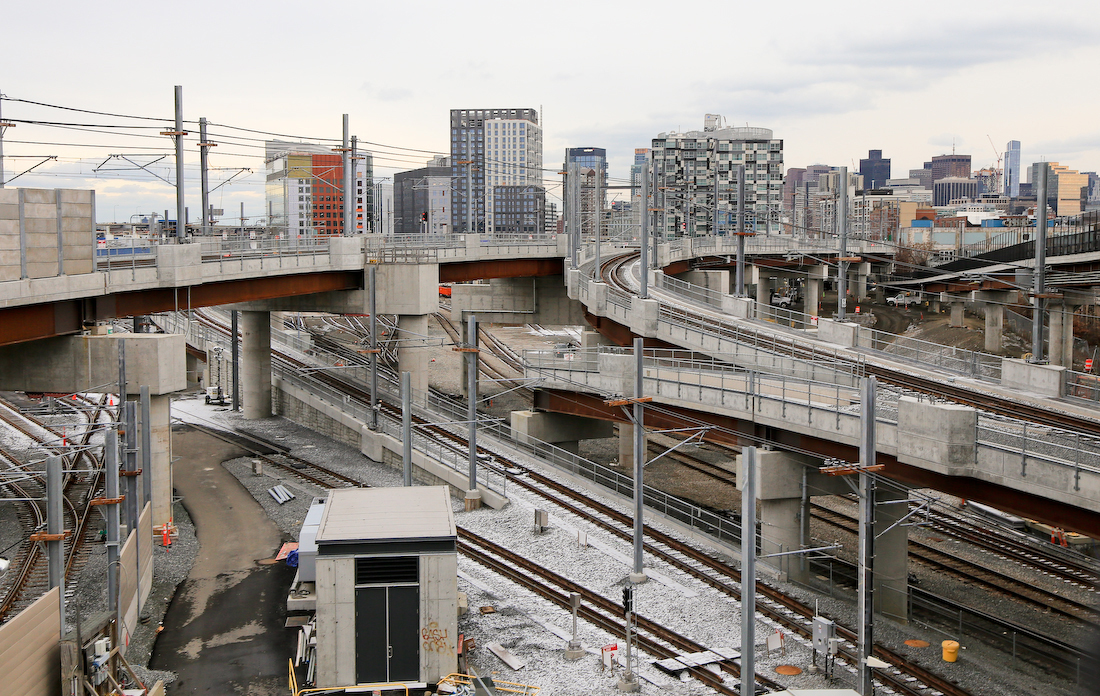
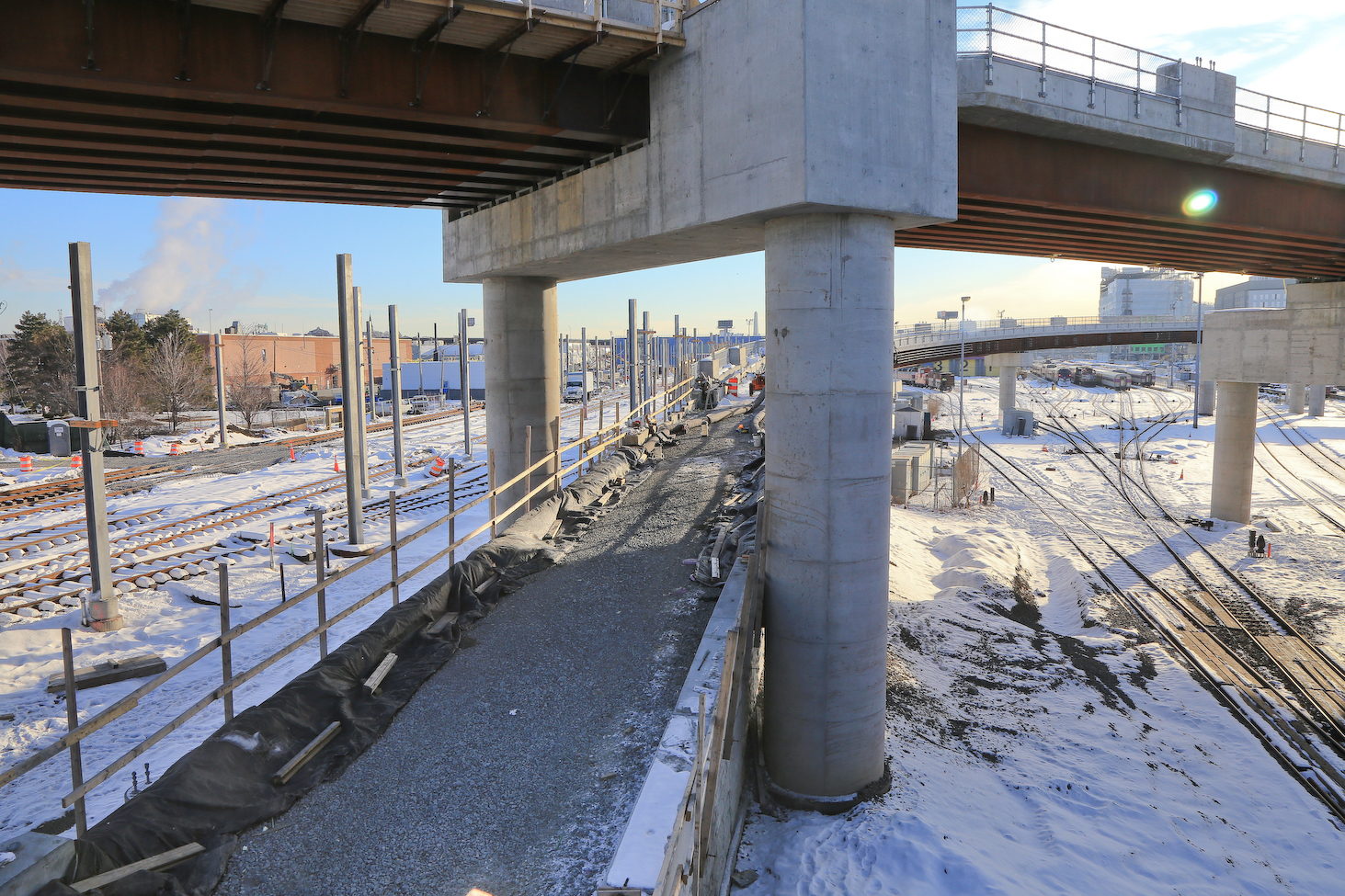
Although earlier iterations of the project had been derailed by soaring costs, the GLX Constructors team used a streamlined approach with an eye toward value engineering to preserve the service and amenities that had been requested and approved by the communities. As part of this approach, the team had hoped to eliminate much of the elevated viaduct near the new Lechmere Station by using mechanically stabilized earth retaining walls.
The MSE walls would obviate the need for complex structural steel arrangements and permit a much faster, less expensive building process. However, a thorough survey of the project area performed by the geotechnical subconsultant GZA discovered poor soil conditions in one area that was to be served by an MSE embankment. In response, the team had to pivot and revert to the use of a traditional raised viaduct consisting of structural steel in the area.
Rather than purchase expensive newly fabricated steel for the project, the design team took advantage of steel beams that had been bought by the prior project team and intended for a different area where the viaduct was able to be replaced with an MSE embankment, saving time and money.
Riding high
Using the savings, the team was able to stay within budget while accommodating the community’s requests for a pedestrian and cyclist path, an amenity that had been on the chopping block as costs soared under a previous plan. The community path includes a 1,400 ft long viaduct that gradually rises more than 50 ft over a complex confluence of tracks in the Inner Belt area just north of the new Lechmere Station, where the GLX splits into separate branches and another set of tracks leads to the new vehicle maintenance facility and storage yard.
Having a maximum incline of 5 degrees, the viaduct complies with Americans with Disabilities Act standards and affords pedestrians and cyclists one of the best views of the downtown skyline from its peak. The path also provides an important link to the heavily used Minuteman Commuter Bikeway, giving pedestrians and cyclists a nearly car-free route along an almost 15 mi long stretch from downtown Boston to Bedford.
As the GLX has entered full revenue service, the project has significantly benefited the communities it serves. While increasing economic opportunities and environmental benefits, it provides reliable public transit service and an alternative, safe route for active transportation for communities that were once overlooked.
Andrew Bradshaw, P.E., is a senior associate and senior project manager and Keith MacKenzie, P.E., is a vice president and planning director at STV. Both are in STV’s Boston office.
Project credits
Owner: Massachusetts Bay Transportation Authority
Lead designer: STV
Design-build contractor: GLX Constructors, a joint venture comprising Fluor Enterprises Inc., The Middlesex Corp., Herzog Contracting Corp., and Balfour Beatty Infrastructure Inc.
This article is published by Civil Engineering Online.




